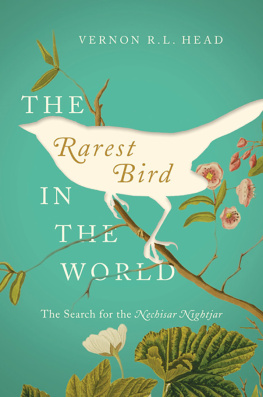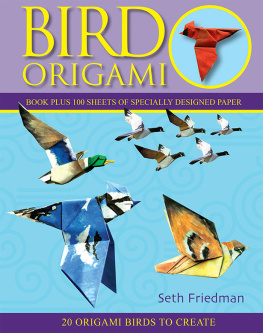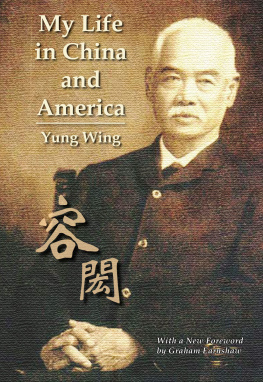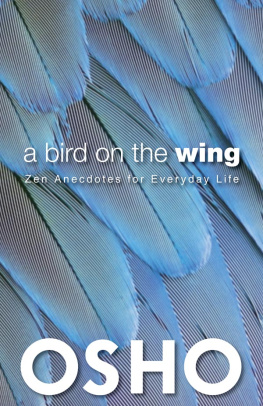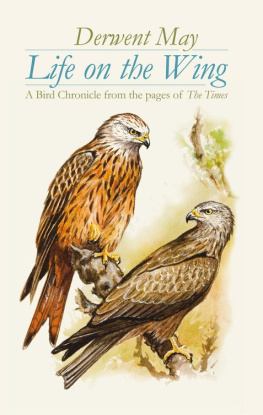
THE
Rarest Bird
IN THE WORLD
The Search for the Nechisar Nightjar
VERNON R. L. HEAD

PEGASUS BOOKS
NEW YORK LONDON
THE RAREST BIRD IN THE WORLD
Pegasus Books LLC
80 Broad Street, 5th Floor
New York, NY 10004
Copyright 2015 by Vernon R. I. Head
First Pegasus Books hardcover edition March 2016
All rights reserved. No part of this book may be reproduced in whole or in part
without written permission from the publisher, except by reviewers who may quote
brief excerpts in connection with a review in a newspaper, magazine, or electronic
publication; nor may any part of this book be reproduced, stored in a retrieval
system, or transmitted in any form or by any means electronic,
mechanical, photocopying, recording, or other, without
written permission from the publisher.
ISBN: 978-1-60598-963-1
ISBN: 978-1-68177-106-9 (e-book)
Distributed by W. W. Norton & Company, Inc.
Dedicated to
Ian Sinclair, Gerry Nicholls, Dennis Weir
and
The Cambridge University Expedition Team of 1990
(Will Duckworth, Mike Evans, Roger Safford,
Mark Telfer, Rob Timmins and Chemere Zewdie)

The wing of the Nechisar Nightjar
EYES ARE FOR SEARCHING, and sometimes the search is for eyes in the night. I blinked, turning my cheeks to the dusty mud. Shapes slid before me, slicing like the shadows from a tent, stealing bits of shine.
It was an elemental evening in Ethiopia. We were following a map, and it was my turn to aim the spotlight as we drove, looking for a bird of the night. Mammal eyes shine silvery, but night-bird eyes shine in warmer colours. Swollen with dreams, we were journeying enquiringly along a bumpy, beautiful track on a path through time. Stars became scribbles of direction and instruction. Time wobbled in the spot-lit air, and all was an ebony mist on the flat plain.
The sparkle from my bulb attracted all manner of flying things, except for the nightjar we had come to see. Quiet bats dodged my head predictably. Insects attacked and zapped, wedging incessantly into the recesses between my teeth. Their taste cracked, tangy and fruity in sweet, slippery movement. I spat incandescent strands that tied me fleetingly to the earth. All about me the grass was bleached in light. My stare was fixed on the moving spot that bobbed in front of our four-wheel drive, probing the dark. Not even the wiggling of flying ants and moth-like things trapped in my pants and vibrating in my groin could distract me.
This was no ordinary place. It was an in-between place; the mountains on both sides were the fresh blue of night, distant yet also close by. Named Nechisar, or white grass in Amharic, the old language of the place, it was full of the vulnerable whiteness of the young, the new and the untouched. It smelt and felt of colours that were new. And it promised to change my life.
Ethiopia smiles and cries at once. Its landscape talks of primordial light and primordial movement. It has low, hot areas and incredibly cold, high areas. It is lush in some places and stark in others; it is plentiful in the birth of things, yet barren in the stillbirth of others. Here the tame and the feral mingle. There is feasting but also starvation. Some languages here sing happily while others scream in anger. Yet I found Ethiopia to be a kind host, patient and wise, although filled with many, many moods: my own and those of others and also of the landscape even the rocks had moods.
At 1100 to 1650 metres above mean sea level, time floated like a bird, changing yet still, and always born new. Here the meaning of mean sea level came into its own, speaking of the connection to the distant sea, the movements of continents and oceans, the vast scale of planetary proportion and perspective and our smallness, our ultimate significance and insignificance. We were far beyond the reach of the tame, among undiscovered Darwinian secrets, beautifully old and African.
Eyes! I said.
The eyeshine came from near the ground, a uniquely paired glow of golden copper-red, bright little balls hovering side by side in the air. We were on the edge of a famous, primitive plain, at the edge of its shape, and a strange bird was sitting motionless before us like a teardrop, unsettled and temporary, not far from a large bush, all verged and edgy.

Twenty-two years earlier, on 6 July 1990, an expedition of scientists from Cambridge University had arrived on these plains, tucked between the hills of the Great Rift Valley. The team Duckworth, Evans, Safford, Telfer, Timmins and Zewdie had come to Ethiopia to find answers in and of its wilderness, and to share the mistakes of their own trammelled world so that Nechisar could remain untrammelled. They understood the meaning of the pristine in a global landscape, where ice from a peak waters flowers in the valley, where rivers become the sea, butterflies become pollen, trees become air, and a foaling zebra feeds the soil with its afterbirth juice and the cheetah with its flesh.
These long lines of interconnectedness meant that the discovery of a dragonfly in Africa was important for the sunshine in London, and so a birds wing found by chance in the sand was a treasured object to them, a moment of celebration, and even a declaration of hope for people.
These scientists were modern in their approach to Nechisar and nature. Yet their gaze had originated in the Victorian Age, the Age of Discovery, a time of naturalist explorers whose mission it was to seek out and catalogue life in colonial adventure.
In 1836, the British survey ship HMS Beagle returned to England after five years circumnavigating the Southern Hemisphere, having stopped at many, many places, many seas and many islands. It had harboured a paying guest named Charles Darwin, a man of wild schemes and careful thoughts who became, over the course of the journey, the ships naturalist. Floating up and down on the tide in the port of Falmouth, the HMS Beagle was aglow with his curious cargo: a vast collection of vertebrates, invertebrates, marine organisms, insects, fossils, rocks, plants, birds, and many, many new names, all richly illuminated by his thorough, careful notes and recollections of sightings, habitats, distributions, colours and sounds. On this long and important journey, Darwin had come to a new understanding of the intense variety in the natural world, and the mystery of natural selection began to evolve into answers on his quiet tongue.
On the Ross Expedition to the South Magnetic Pole between 1839 and 1843, the assistant surgeon on HMS Erebus, Joseph Dalton Hooker, collected and labelled for Kew, finding new flowering plants, mosses, liverworts, lichens and algae. He named creatures and places, and found answers to island mysteries through island ecology. His profound ordering of the natural world became a part of the journey of the new scientists of Nechisar. On the HMS Rattlesnake en route to New Guinea and Australia from 1846 to 1850, the young assistant surgeon Thomas Henry Huxley had netted, dissected and studied the ocean creatures, describing new marine invertebrates. The oceans began to live in tiny and translucent species, wobbling like jellyfish, linking different peoples in aboriginal truths at the edges of new lands. His careful watching, drawing and noting also became part of the journey of the new scientists of Nechisar. And on the 1848 voyage of the small trading barque HMS
Next page
